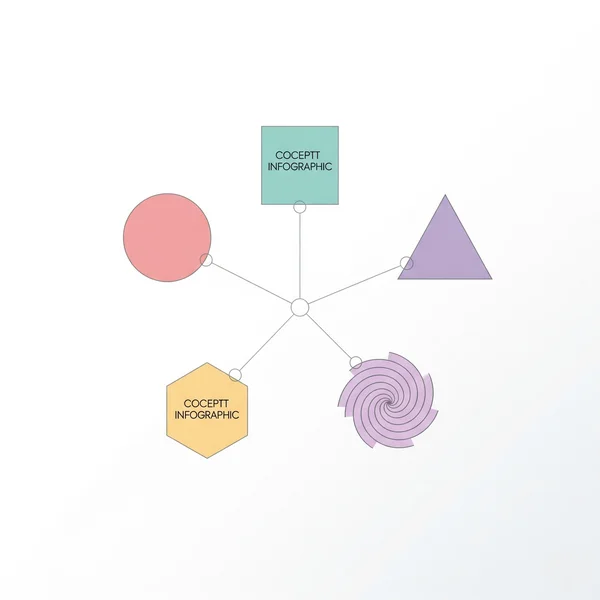Big 5 Personality Test: The Ultimate Guide
Have you ever wondered what truly makes you you? For centuries, humans have sought to understand the core components of personality. Today, one of the most respected and scientifically validated frameworks available is the Big 5 model of personality. But what is the Big 5 personality test, and how can it provide you with meaningful insights into your life? This ultimate guide will answer all your questions, from its scientific origins to its real-world applications. Ready to begin your journey of self-discovery? Take our free, science-based personality test and follow along.

What Is the Big 5 Personality Test? A Scientific Model
The Big 5 personality test is not just another online quiz; it is a comprehensive personality assessment rooted in decades of psychological research. Unlike tests that categorize people into rigid "types," the Big 5 operates on a spectrum, measuring your individual levels across five core personality traits. This approach, known as the trait theory of personality, provides a more nuanced and accurate picture of who you are.
The Science Behind Trait Theory vs. Type Theory
A common question is, what makes the Big 5 model of personality different from tools like the MBTI or Enneagram? The key difference lies in its foundation.
- Trait Theory (Big 5): Views personality as a combination of continuous dimensions. You aren't just an "extrovert" or "introvert"; you fall somewhere on a scale of Extraversion. This allows for infinite variations in personality.
- Type Theory (MBTI, etc.): Places individuals into distinct categories (e.g., "INFJ" or "The Achiever"). While popular, these models often lack the rigorous scientific validation and reliability of the Big 5.
The Big 5 is the most widely accepted model in personality psychology today because it consistently demonstrates reliability and validity across different cultures and populations.
From Lexical Hypothesis to Modern Model: A Brief History
So, who created the Big 5 personality test? The model doesn't have a single creator but evolved from the work of several researchers starting in the 1930s. Early pioneers like Gordon Allport and Henry Odbert proposed the "lexical hypothesis"—the idea that the most important personality traits would eventually be encoded in our language. They identified thousands of words describing personality, which were later condensed through statistical analysis (factor analysis) by researchers like Raymond Cattell, and eventually refined into the five broad dimensions we use today by figures like Lewis Goldberg, who coined the term "Big Five".
The 5 Personality Traits Explained: The OCEAN Model
The easiest way to remember the five core traits is with the acronym OCEAN (or CANOE). Each letter represents a fundamental dimension of human personality. Let's explore what each one means for you.

O - Openness to Experience: The Explorer
Openness measures your appreciation for art, emotion, adventure, unusual ideas, curiosity, and variety of experience.
- High Scorers: Are often creative, imaginative, intellectually curious, and open to new things. They enjoy abstract concepts and are willing to challenge authority.
- Low Scorers: Tend to be more conventional, practical, and prefer routine over novelty. They find comfort in the familiar and are often more down-to-earth.
C - Conscientiousness: The Organizer
Conscientiousness is the tendency to be organized, dependable, and self-disciplined. This trait reflects your ability to control impulses and act in socially acceptable ways.
- High Scorers: Are typically hardworking, reliable, and goal-oriented. They are planners who think carefully before acting. This trait is strongly linked to academic and career development.
- Low Scorers: Are more spontaneous, flexible, and sometimes disorganized. They may prefer to go with the flow rather than stick to a rigid plan.
E - Extraversion: The Energizer
Extraversion indicates how you draw social energy. It's characterized by sociability, talkativeness, assertiveness, and emotional expressiveness.
- High Scorers (Extroverts): Gain energy from social interaction. They are often outgoing, enthusiastic, and enjoy being the center of attention.
- Low Scorers (Introverts): Expend energy in social situations and recharge through solitude. They are often described as reserved, thoughtful, and prefer smaller groups.
A - Agreeableness: The Harmonizer
Agreeableness reflects individual differences in concern for social harmony. It measures how compassionate and cooperative you are versus suspicious and antagonistic.
- High Scorers: Are often trusting, helpful, kind, and empathetic. They value getting along with others and are skilled at maintaining relationships.
- Low Scorers: Tend to be more competitive, skeptical, and place self-interest above getting along with others. They are often straightforward and unafraid of conflict.
N - Neuroticism (and Emotional Stability): The Sentinel
Neuroticism is the tendency to experience negative emotions, such as anger, anxiety, or depression. It's sometimes referred to by its inverse, emotional stability.
- High Scorers: Are more emotionally reactive and vulnerable to stress. They may perceive ordinary situations as threatening and minor frustrations as hopelessly difficult.
- Low Scorers: Are generally calm, emotionally stable, and resilient. They are less likely to get upset and can handle stress well.
Understanding your unique combination of these five traits is the first step toward powerful personal growth. Why not discover your personality profile with our Big 5 test?
How to Take and Interpret Your Big 5 Test Results
Now that you understand the theory, what does the process look like in practice? What does the Big 5 personality test measure for you specifically?
Taking Our Free Big 5 Personality Test (Step-by-Step)
Our test is designed to be simple, fast, and insightful.
- Answer Honestly: Respond to a series of statements about yourself. For the most accurate results, answer based on how you generally are, not how you wish to be.
- No Registration Required: You can start the free Big 5 personality test immediately.
- Get Instant Results: Once completed, your personalized report is generated instantly.
Understanding Your Score: What Do the Percentiles Mean?
Your results will be shown as percentiles. A percentile score indicates how your level on a specific trait compares to others. For example, a score of 80% in Extraversion means you are more extraverted than 80% of the population. It doesn't mean you are "80% extroverted."
A Balanced View: The Nuances of High and Low Scores
It's crucial to remember that there are no "good" or "bad" scores. Each end of the spectrum has its own strengths and challenges. High conscientiousness is great for being a surgeon, but high openness might be better for being an artist. True self-awareness comes from understanding your unique profile and learning how to leverage it.
Real-World Applications of the Big 5 Model
So, how can the Big 5 help me? Its applications are vast and practical.

- Career Development and Job Satisfaction: Aligning your career with your personality can lead to greater satisfaction and success. An introverted, highly conscientious individual might thrive in data analysis, while a highly agreeable extrovert might excel in nursing or sales.
- Improving Personal Relationships: Understanding your partner's or friend's personality can foster empathy and improve communication. Knowing they are low in Agreeableness can help you not take their directness personally.
- A Tool for Self-Awareness and Personal Growth: The most powerful application is personal. Knowing your tendencies (e.g., high neuroticism) allows you to develop strategies to manage them, leading to improved well-being and emotional stability.
Limitations and Criticisms of the Big Five
To maintain a scientific perspective, it's important to acknowledge the model's limitations. Is the Big 5 test accurate? While it is highly reliable, critics point out a few things:
- It Describes, It Doesn't Explain: The model tells you what your personality is like, but not why it's that way (e.g., genetics, upbringing).
- It May Not Predict Specific Behaviors: Knowing someone is conscientious doesn't guarantee they'll be on time for a specific meeting. Personality reflects general tendencies.
- Cultural Considerations: While the five traits appear to be universal, their expression and ideal levels can vary across cultures.
Despite these points, the Big 5 remains the gold standard in personality assessment.
Your Journey of Self-Discovery Starts Now
The Big 5 personality test is more than a set of scores; it's a mirror that reflects your unique psychological makeup. It offers a scientifically-backed language to understand yourself and others, empowering you to make more informed decisions in your career, relationships, and personal life. The path to deeper self-awareness is just a few clicks away.
Ready to discover your personality profile? Take the Free Big 5 Personality Test Now
Frequently Asked Questions
Who created the Big 5 personality test?
The model was not created by one person but evolved over decades. Its origins are in the "lexical hypothesis" from the 1930s, with key contributions from researchers like Gordon Allport, Raymond Cattell, and Lewis Goldberg, who ultimately refined it into the five-factor structure we use today.
What does the Big 5 personality test measure?
It measures your standing on five core personality dimensions: Openness, Conscientiousness, Extraversion, Agreeableness, and Neuroticism (OCEAN). The results show you where you fall on the spectrum for each trait compared to the general population, offering a detailed and scientifically-grounded personality profile.
Is the Big 5 personality test scientifically valid and reliable?
Yes. The Big Five is widely considered the gold standard in personality psychology due to its strong statistical validity and reliability. It consistently produces similar results over time and has been validated across a wide range of cultures and demographics. You can learn more when you explore the science on our site.
How long does the Big 5 test take to complete?
Most versions, including our own, are designed to be completed quickly, typically in about 10-15 minutes. This allows you to get a comprehensive and insightful report without a significant time commitment.
Can my Big 5 traits change over time?
Research suggests that personality traits are relatively stable throughout adulthood but are not set in stone. Significant life events, conscious effort, and aging can lead to gradual changes. For example, people tend to become more agreeable and conscientious and less neurotic as they get older. Understanding your baseline is the first step if you wish to work on your personal growth.